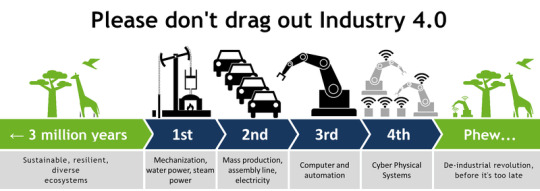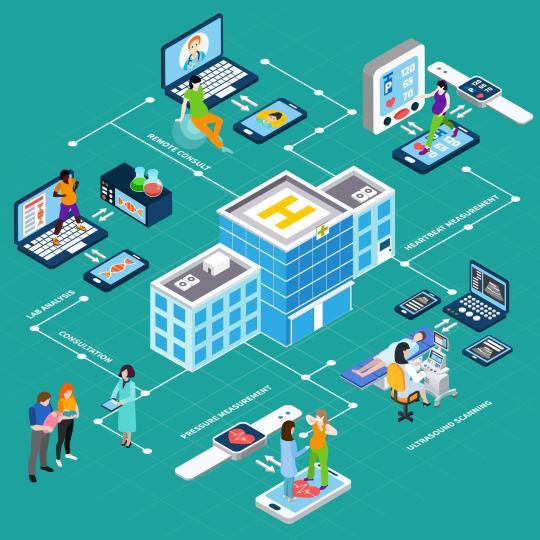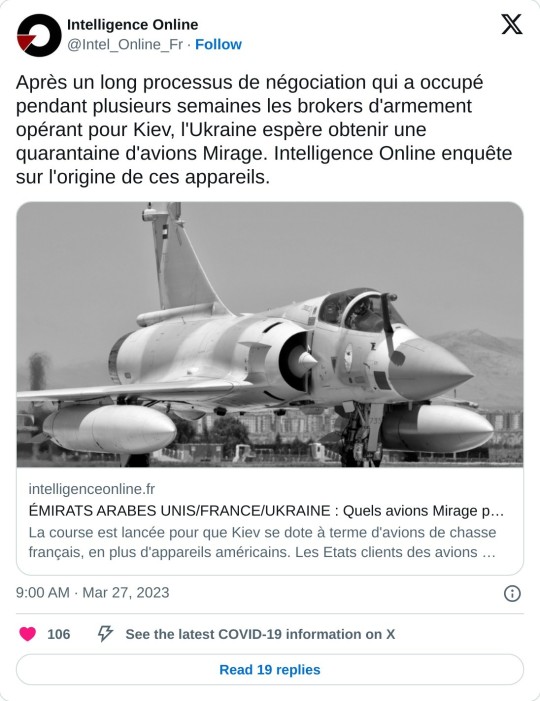#intelligent interoperability
Explore tagged Tumblr posts
Photo

AI Beyond Efficiency: note on the event
This is a short preview of the article: This is a small note that summarize the first workshop of AI beyond efficiency that we did in Valencia in the past spring. It was a really fun and formative experience where we had the possibility to interact with many colleagues across Europe. We can clearly declare the workshop successful
If you like it consider checking out the full version of the post at: AI Beyond Efficiency: note on the event
If you are looking for ideas for tweet or re-blog this post you may want to consider the following hashtags:
Hashtags: #ArtificialIntelligence, #BeyondEfficiency, #BigData, #Industry40, #Industry50, #IntelligentInteroperability, #InternetOfThings, #IoT, #Workshop
The Hashtags of the Categories are: #BigData, #InternetofThings, #MachineLearning, #Publication, #Research
AI Beyond Efficiency: note on the event is available at the following link: https://francescolelli.info/research/ai-beyond-efficiency-note-on-the-event/ You will find more information, stories, examples, data, opinions and scientific papers as part of a collection of articles about Information Management, Computer Science, Economics, Finance and More.
The title of the full article is: AI Beyond Efficiency: note on the event
It belong to the following categories: Big Data, Internet of Things, Machine Learning, Publication, Research
The most relevant keywords are: Artificial Intelligence, beyond efficiency, Big Data, Industry 4.0, Industry 5.0, intelligent interoperability, internet of things, IoT, Workshop
It has been published by Francesco Lelli at Francesco Lelli a blog about Information Management, Computer Science, Finance, Economics and nearby ideas and opinions
This is a small note that summarize the first workshop of AI beyond efficiency that we did in Valencia in the past spring. It was a really fun and formative experience where we had the possibility to interact with many colleagues across Europe. We can clearly declare the workshop successful
Hope you will find it interesting and that it will help you in your journey
This is a small note that summarize the first workshop of AI beyond efficiency that we did in Valencia in the past spring. It was a really fun and formative experience where we had the possibility to interact with many colleagues across Europe. We can clearly declare the workshop successful as we had to cap…
#Artificial Intelligence#beyond efficiency#Big Data#Industry 4.0#Industry 5.0#intelligent interoperability#internet of things#IoT#Workshop
0 notes
Text
Tired of AI Silos? Meet the Protocol That Connects LLMs to the Real World (and Each Other)
We're living in an exciting time for AI, with powerful models like Claude, ChatGPT, and others excelling at different tasks. You might find one is better at creative writing, another at coding, and a third at summarizing complex documents. But accessing the right data or using a specific tool with the best model for the job can feel clunky, often requiring manual copy-pasting or complex, one-off integrations.
What if your favorite AI assistant could seamlessly access your personal notes, query your company database, or even control a smart device, passing that real-world context to whichever AI model is best equipped to handle the next step?
Enter the Model Context Protocol (MCP).
Think of MCP as the "USB-C" for AI applications. Just as USB-C provides a single, standard port for connecting various hardware devices (displays, storage, power) to your computer, MCP provides a standard way for AI models to connect to and interact with external data sources, tools, and systems.
Developed by Anthropic, MCP isn't about building new AI models; it's about standardizing how existing ones get context and take action. It works through a simple client-server model:
An MCP Server is built to expose the capabilities of a specific external system – whether it's a database, a cloud storage service, an API, or even a device like a "Bee AI device" if someone builds a connector for it. An AI Application (like Claude, ChatGPT, or any tool using an LLM) acts as an MCP Client. It can discover and utilize the capabilities exposed by the MCP servers it's connected to. This capability directly addresses a key challenge: enabling different LLMs to access and work with the same external data. With MCP, the data source (via its MCP server) becomes a shared resource that various LLM clients can access through a standardized interface. Access can be authenticated once for the source, allowing multiple LLMs to then potentially query or interact with that data, leveraging each model's unique strengths.
The future potential is vast:
Truly Agentic AI: Models can perform multi-step tasks involving different tools and data sources seamlessly. Personalized Assistants: AI can safely access and manage your personal data and devices with your explicit consent. Interoperable AI Ecosystem: Different models and AI applications can work together more effectively by accessing shared resources through a common protocol. MCP is still growing, but it represents a crucial step towards breaking down AI silos, making models more useful by giving them safe, standardized access to the rich context of the real world, and paving the way for smarter, more integrated AI experiences.
0 notes
Text
Scaling Your Data Mesh Architecture for maximum efficiency and interoperability

View On WordPress
#Azure Databricks#Big Data#Business Intelligence#Cloud Data Management#Collaborative Data Solutions#Data Analytics#Data Architecture#Data Compliance#Data Governance#Data management#Data Mesh#Data Operations#Data Security#Data Sharing Protocols#Databricks Lakehouse#Delta Sharing#Interoperability#Open Protocol#Real-time Data Sharing#Scalable Data Solutions
0 notes
Text
Interoperability In Healthcare System For CCRC & LTPAC | NuAIg Automation Nuaig helps CCRC and LTPAC service providers enhance and boost their operation efficiency by implementing interoperability in the healthcare system. To read the complete interoperability case study visit the website. To book a free consultation mail at [email protected].
#interoperability in healthcare#ltpac consultant#ltpac software#caregiver retention#resident experience management#intelligent automation solutions#post acute care management#aged care technology#continuing care retirement communities#older adults technology services
0 notes
Text
In commemoration of my very (sur)real adventure to get back to Berlin at night via public transport, in the company of two Finnish fellow guest professors, complete with multiple side-quests and setbacks, here's a little amusing John and Scott thing. Absolutely nothing hurts.
Many thanks to @janetm74 , as ever!
ODYSSEY
It was a truth universally acknowledged that only part of Scott was born on his birthday. The other one arrived as Virgil came to be, making a complete whole.
It was a lesser known fact that Scott and John had their strengths and competences that, while quite far removed in range, complimented each other, so together they formed a formidable unit. For example, John spoke impeccable German. Scott's German was a torturous tangled mess of mixed articles and cases, but was heavily reinforced by a smile and dimples that could charm the socks off a wooden fence. Together they were typically unstoppable on a trip.
None of those interoperable skills were of any use to them at the moment, in the middle of nowhere, Berlin Metropolitan area, approaching midnight. They had one jacket between them, Scott's, which John was currently wearing. Realistically he understood Scott wasn't actually "all good, Johnny, you know I run hot!", but the piercing chill left only the little brother portion of John's brain operational. Nobody could have forseen the German public transport system pulling a kafkaesque trick and sending them on a roundabout commute around Berlin across three to four connection rides by multiple transportation types. Reaching just ever so close but never enough to actually make it to their hotel.
Throwing the vast (one might say - unlimited) supply of money at the problem of getting back to the city from John's guest lecture was also impeded by an unexpected curveball - this late and this far away from the city limits translated into cash only services. Which they hadn't carried on them since about high-school. Their state-of-the-art comms were also rendered useless by the indomitable fact of there simply being no coverage.
Scott suggested walking or hitchhiking, which earned him an unimpressed turquoise glare - John opted out of Rescue Scouts at a tender age of six for a reason, thank you very much! The aforementioned dimples would have probably scored them a ride quite swiftly, but the plan wasn't without its demerits. The most prominent of those being killed by Kayo if she ever found out.
Despite the unfortunate circumstances that were bringing them no closer to the warm and comfortable suite in the Intercontinental, John was glad to be with Scott in this. He always secretly cherished big brother attending his academic talks, the buzz of the crowd fading away in the calming, centering presence. Biggest brother was also in possession of an ability to exhude undefeatable optimism and energetic attitude that, John suspected, he'd cracked up quite a bit for his sake, despite the cold and exhaustion. John felt safe and secure in the notion they would make it home soon no matter what. Scout's honor! Safe enough he actually dozed off on the denim clad shoulder on what was, hopefully, to be the last leg of their ardorous journey by U-bahn, that time.
The unexpected problem arrived as they actually walked the length of the street to the hotel. Of course it did! Intercontinental boasted the security levels vetted by multiple international intelligence agencies. By a strike of cosmic irony, those measures were tweaked up ever so more, because The Scott Tracy and his brother were staying over the week. Which meant a full lockdown past midnight. John audibly groaned. Scott burst into a laugh that was at least part hysteria.
That time it was nothing left for them to do but test the glorified security measures and do a field upgrade of their parcour and scaling skills. The security of Intercontinental foreseeably didn't hold up against two freezing, tired, and hungry Tracies on a mission, but at least, Kayo would have the hotel staff's heads, not theirs.
#thunderbirds are go#scott tracy#scott tracy is a good big brother#john tracy#john tracy is a good brother#john tracy didn't sign up for this#my fic#thunderbirds 2015
36 notes
·
View notes
Text
Trans-Atlantic relations as we know them are over. The Trump administration in the United States has made it clear that it prefers striking a deal with Russia or other autocrats over maintaining long-term commitments with its Western partners. These threats have united Europeans, who are ramping up their support for Ukraine, investing heavily in their own defense, and striving to build a stronger and more resilient economy. Meanwhile, U.S. institutions that once supported international cooperation and American soft power are getting dismantled.
These developments amount to a trans-Atlantic divorce—and also an opportunity to shape a new trans-Atlantic future by investing in the human capital that the Trump administration has made newly available. At the same time that Europe is trying to build its military capacity, stand on its own feet in intelligence, and make its data and energy infrastructure more resilient, the United States is bleeding talent across the board. U.S. human capital can help build Europe’s future and lay the foundation for a potential renewed trans-Atlantic partnership sometime in the future.
The Trump administration has frozen vast federal funds and announced the elimination of as many as 100,000 jobs, including senior military and security personnel. It has also threatened to push aside military officers who support diversity, equity, and inclusion. The treatment of U.S. intelligence agencies has been even harsher. The CIA has offered buyouts to numerous staff members and initiated the termination of an undisclosed number of contracts for junior officials and probationers.
While the exact numbers of those who have retired or resigned from U.S. intelligence agencies and the military are classified, it is evident that this action resembles a purge of thousands of competent employees. This has led to numerous debates within the United States, with the most prominent being about potential threats to U.S. security and the loss of top talent.
While this talent may potentially compromise U.S. security and military capabilities, it could also present unexpected opportunities for the European defense and intelligence sectors. Suddenly, thousands of competent military and security personnel are seeking new employment. While many would likely consider positions within the U.S. private defense and security sectors, the sheer number indicates that some may be interested in pursuing careers in other regions. Given the evident discontent with their dismissal, as well as their disagreement with U.S. President Donald Trump’s policies on basic human and political levels, it is conceivable that some would consider offering their services to another NATO army or agency in another Western country.
The transfer of personnel who have worked on highly sensitive matters or are trained in one military doctrine to another country is not a straightforward process. However, it is not impossible. Such a move would be more than opportunistic; it would also have practical and symbolic political benefits.
While direct transfers of officers between NATO members’ armed forces are rare, mechanisms like exchange programs and NATO assignments exist to promote interoperability. These arrangements, supplemented by targeted training and professional development, ensure that officers can effectively integrate and operate within different national military frameworks.
It is fair to assume that some of the U.S. military personnel who have been laid off, or are now dissatisfied and considering leaving, have participated in such exchange programs in the past, which would make it easy for them to engage again with those NATO member units in Europe. There should no obligation for U.S. military personnel to join regular European units in a standard service contact; they could be hired as advisors instead, which would be politically and administratively more palatable for the hiring militaries.
Clearly, for intelligence professionals, such a transition may be more challenging due to laws over nondisclosure and state secrecy. But by employing some creativity—within schemes championed by philanthropic foundations, for example—it could be possible. One could think of fellowship programs, for example, that would allow senior officials to maintain their income and independence, while providing consultation and support for European public administrations at the same time. Although not directly comparable, consider the effort that George Soros made after the end of the Cold War to sponsor scientists from the former Soviet Union in order to preserve nuclear and scientific expertise from falling into the hands of rogue states.
Such trans-Atlantic connections could also be a significant political statement. By welcoming competent and able U.S. personnel into their own agencies, Europeans would demonstrate that Euro-Atlantic ties extend beyond mere government relations—a message that resonates not only with the Democratic Party but also with the many Americans who disagree with Trump. It would also underscore Europe’s commitment to continue working together for mutual benefit, strengthening the trans-Atlantic relationship and demonstrating solidarity with those Americans who have been recently laid off.
This sort of hiring spree by Europe may not require extensive publicity, but it will certainly diverge from the Trump administration’s narrative and strategic approach. This could potentially cause some diplomatic friction, but it could also be of some broader diplomatic benefit. Europe can demonstrate its ability to act as an unpredictable and potentially influential independent entity, capable of identifying and acting on material opportunities that become available. It’s an ability that demands to be taken seriously.
What is possible in military and intelligence domains is even easier in the broader economy, where Europe can gain valuable insight from public officials who have experience in the oversight of sectors like energy and data, or other domains marked by integrated platforms and collaborative work such as public health and science.
It’s likely that European governments will be slow to provide the necessary support for hiring former U.S. officials, given various legal and bureaucratic obstacles. Legally, it may be much easier for personnel with U.S. security clearances to receive a fellowship or contract from a U.S.-based foundation rather than one from a foreign government. Therefore, philanthropists on both sides of the Atlantic, shocked by the dismantling of the institutions and tools of American soft power and geopolitical leadership, could act before governments step in by providing seed capital. Starting fellowships programs and imagining short-term affiliations or consultancy contracts would allow senior leadership from the United States to be included in Europe’s construction.
In these turbulent times, such links would create an alternative integration of the Western world that is focused on networked human capital. All this would have both short- and long-term positive effects. It would immediately speed up the improvement of European security and intelligence. In the long term, it would safeguard the basis for a future trans-Atlantic alliance through interpersonal connections and a shared culture.
However, it is urgent to think about how trans-Atlantic relations will look after the current divorce. It is not only because the investment in Europe’s defense and intelligence capacities needs to start immediately with full speed, but also because U.S. talent is already on the job market.
Time is of the essence. As with all good ideas, Europeans will not be the only ones pursuing an investment in U.S. human capital to strengthen their own interests. American employers will inevitably be among those competing for this talent. And U.S. intelligence has produced evidence that Russia and China are already scouting disgruntled federal workers. Europeans would be well advised to focus on helping the many competent officials currently in distress, if only for the sake of giving the West a chance to survive its current turmoil.
21 notes
·
View notes
Text
i've been thinking about this all day since I witnessed it
dude: "I think people are smart because they are smart, not because they are autistic. No mental disability should be claimed to be responsible for making a person smarter because that is stereotyping the condition and it's simply not true. The stereotype of the savant autistic person is counter-productive because it's rare in autism and people need to stop assuming intelligence means autism." other dude: "That is rude and ableist of you to say autistic people can't be smart"
dude: that's not what I was saying at all you fucking dingbat
other dude: WOW I'M AUTISTIC AND NOT UNDERSTANDING WHAT PEOPLE SAY IS AN AUTISM THING AND YOU ARE ABLEIST FOR NOT REALIZING THAT ABOUT ME AND NOT HOLDING MY HAND THROUGH WHAT YOU SAID

Look, I've learned as a rule of thumb NOT to interoperate everything people say in bad faith unless it's absolutely blatantly obvious they're being a shitheel, because believe it or not most people aren't trying to open themselves up to attack for saying something shitty. Most of the time, they just said something stupid without thinking and it's not meant to be harmful.
17 notes
·
View notes
Text
Shocking Trends in Technology and Gadgets
Technology is advancing at an unprecedented pace, transforming not only our methods of communication but also our lifestyles, work habits, and thought processes. The year 2025 is set to be a pivotal moment in the development of gadgets and innovations that influence everyday life. From artificial intelligence and smart wearables to groundbreaking advancements in energy and computing, each innovation is redefining our expectations. What was once considered science fiction is now a reality and frequently integrated into our daily routines. As we anticipate a more interconnected, efficient, and immersive world, the latest trends illustrate a profound integration of technology with human experience.

These transformations extend well beyond merely new smartphone models or sleeker laptops. We are discussing trends that impact health, sustainability, communication, education, and even our experiences with entertainment. This article delves into the most significant and surprising trends in technology and gadgets as they unfold in 2025. Each segment examines how these advancements will influence various industries and what implications they hold for consumers and businesses alike.
For more details visit this
Whether you are a technology enthusiast, a professional in the industry, or simply an interested observer, grasping these forthcoming innovations is crucial. They are poised not only to change how we engage with the world but also to provide insights into the future direction of society. Prepare to discover twenty revolutionary trends that you cannot afford to miss.
II. The Ascendancy of Artificial Intelligence in Daily Life
Artificial Intelligence (AI) has transitioned from a specialized concept limited to researchers and engineers. By 2025, AI is becoming an integral aspect of everyday life, seamlessly woven into our daily activities. Smart assistants have evolved far beyond basic voice commands. They now provide proactive suggestions based on our habits, preferences, and surroundings.
Smartphones continue to be central to our digital lives, and 2025 brings some jaw-dropping innovations. Foldable and rollable displays are now mainstream, offering larger screens without increasing device size. These form factors enhance multitasking, gaming, and content consumption.
AI-powered cameras automatically adjust settings to capture professional-grade photos, recognize documents, and even analyze skin conditions. Battery life has also seen significant improvement thanks to more efficient processors and smarter power management systems.
Biometric enhancements such as under-display fingerprint sensors and facial mapping improve security. Additionally, smartphones now function as hubs for controlling other smart devices, from thermostats to vehicles.
With the integration of satellite connectivity, even remote areas enjoy reliable communication. These upgrades reflect a move toward devices that are not just tools but essential companions in managing digital and real-world tasks.
XI. Rise of the Metaverse
The metaverse has matured from hype to reality. In 2025, it’s a dynamic space for work, play, and socialization. Powered by VR and blockchain, the metaverse offers immersive experiences where users interact with digital environments and avatars.
Social media platforms are integrating metaverse elements, allowing users to attend concerts, business meetings, or even classrooms in virtual spaces. Commerce is thriving through virtual storefronts, where users can shop using cryptocurrency or NFTs.
Hardware advancements like lightweight VR headsets and motion-tracking wearables enhance immersion. Meanwhile, developers focus on interoperability, enabling avatars and assets to move seamlessly across platforms.
Whether it's remote work or digital tourism, the metaverse is reshaping how we connect and collaborate online.
XII. Smart Transportation and Electric Vehicles
Transportation is undergoing a revolution driven by electrification and automation. In 2025, electric vehicles (EVs) are more affordable and widespread, thanks to advances in battery technology and government incentives. EVs offer longer ranges, faster charging, and smart integration with home energy systems.
Self-driving car technology is progressing as well. Autonomous features like lane assist, adaptive cruise control, and automated parking are common. Ride-sharing companies are also piloting robo-taxis in urban centers.
Beyond cars, smart transportation includes connected bicycles, e-scooters, and drones. These innovations contribute to cleaner cities and more efficient travel.
Public transit is also getting smarter with real-time tracking, predictive maintenance, and eco-friendly buses. Together, these trends create a more sustainable and intelligent transportation ecosystem.
2 notes
·
View notes
Text
STON.fi: Driving TON’s DeFi Revolution

Decentralized finance (DeFi) is redefining financial systems, and on The Open Network (TON), STON.fi is at the heart of this transformation. More than just a decentralized exchange (DEX), STON.fi is fueling critical integrations that are expanding liquidity, enhancing gaming economies, revolutionizing trading automation, and attracting institutional players.
With over $5.2 billion in trading volume, 4 million+ unique wallets, and thousands of new users daily, STON.fi is proving its dominance in the TON ecosystem. But beyond these numbers, it is the strategic integrations and innovations that truly define its impact.
Let’s explore the key milestones and integrations that make STON.fi a force to reckon with in the DeFi space.
Seamless Cross-Chain Transactions with Symbiosis
Interoperability remains a major challenge in blockchain. STON.fi’s integration with Symbiosis solves this by enabling seamless swaps between TON and other blockchains.
This development has:
✅ Expanded TON-based assets’ accessibility across multiple chains.
✅ Made cross-chain swaps cheaper, faster, and more efficient.
✅ Boosted STON.fi’s trading volume and liquidity depth.
Now, TON users are no longer restricted within their ecosystem but can easily interact with assets from Ethereum, BNB Chain, and beyond.
Web3 Gaming Gets a Boost with Elympics
Blockchain gaming is one of the fastest-growing sectors in Web3, and STON.fi has positioned itself at the core of this evolution by integrating with Elympics, a competitive gaming platform.
This partnership allows:
Direct in-game token trading through STON.fi’s swap features.
Liquidity access for TON-based gaming projects.
A streamlined gaming economy where reward tokens can be instantly converted into tradable assets.
With this integration, gaming projects can now operate within a well-structured, DeFi-powered economy.
Enhanced Yield Farming with Farmix
Liquidity provision has always been a key part of DeFi, but STON.fi is taking it further through Farmix, which introduces leveraged yield farming.
Users can now increase their farming rewards on supported pools such as:
✅ STON/USDt
✅ PX/TON
✅ STORM/TON
The ability to leverage positions within liquidity pools means higher yield earnings for DeFi farmers. This solidifies STON.fi’s role as a top liquidity provider on TON.
AI-Powered Trading with Wisdomise
Artificial intelligence is rapidly reshaping financial markets, and Wisdomise has integrated STON.fi’s liquidity pools to enhance DeFi trading automation.
Key features of this integration include:
AI-driven market analysis to optimize trade execution.
Automated limit orders using STON.fi’s deep liquidity.
Advanced risk management tools for precision trading.
With this, traders can automate their strategies while maintaining full control over their portfolios.
Web3 Gaming Economy Expands with TonTickets
Web3 gaming is evolving beyond play-to-earn models, and TonTickets is at the forefront of this shift. By integrating with STON.fi, it brings new possibilities for gamers and projects alike.
This integration allows:
Seamless conversion of in-game rewards into TON-based assets.
On-chain raffles and tournaments with instant payouts.
A robust gaming ecosystem powered by DeFi liquidity.
Gamers and developers now have a trusted platform for in-game economies backed by STON.fi’s liquidity infrastructure.
Institutional Investors Enter the Scene with Zodia Custody
For DeFi to achieve mainstream adoption, it must attract institutional capital. STON.fi has made a breakthrough by integrating with Zodia Custody, a regulated digital asset custody provider.
Key benefits of this integration:
✅ STON becomes the first TON-based token supported by Zodia.
✅ Institutional investors now have a secure way to hold TON-based assets.
✅ Major backers like CoinFund are driving serious capital into the TON ecosystem.
This marks a significant step toward bridging the gap between DeFi and traditional finance.
Multi-Chain Asset Management with Tomo Wallet
Managing assets across different blockchains can be challenging, but STON.fi’s integration with Tomo Wallet has simplified it.
This integration provides:
Direct asset swaps on TON from Tomo Wallet.
A more efficient portfolio management system.
Easier liquidity access, making STON.fi’s services more user-friendly.
Users now enjoy a seamless, all-in-one DeFi experience.
STON.fi SDK: The Backbone of These Integrations
A key factor behind STON.fi’s success is its Software Development Kit (SDK), which enables projects to easily integrate with the platform.
With the STON.fi SDK, developers can:
Integrate STON.fi’s swap engine with minimal coding.
Enable cross-chain transactions seamlessly.
Provide users with a frictionless DeFi experience.
From AI-powered trading to gaming and institutional adoption, the STON.fi SDK is the technology driving DeFi expansion on TON.
Final Thoughts: Why STON.fi is Leading TON’s DeFi Growth
STON.fi isn’t just another decentralized exchange—it’s a foundational pillar of TON’s DeFi ecosystem.
By facilitating cross-chain transactions, powering Web3 gaming, enhancing AI-driven trading, and onboarding institutional investors, STON.fi is proving its long-term value in DeFi.
With its SDK simplifying integrations, STON.fi is ensuring that more projects can tap into its liquidity and expand their offerings.
DeFi is moving fast, and STON.fi is leading the charge on TON. Whether you’re a trader, developer, investor, or gamer, one thing is certain—STON.fi is shaping the future of decentralized finance.
3 notes
·
View notes
Text
Indian Army Grows Stronger Under the Leadership of Honorable Modi Ji: Colonel Rajyavardhan Rathore

The Indian Army, one of the world’s most formidable defense forces, has reached new heights under the leadership of Prime Minister Narendra Modi. Spearheaded by strategic reforms, technological advancements, and a renewed focus on self-reliance, India’s defense ecosystem has transformed significantly. Colonel Rajyavardhan Rathore, a decorated ex-army officer and political leader, has praised PM Modi’s unwavering dedication to national security and the welfare of armed forces personnel.
A Renewed Vision for India’s Defense
Under PM Modi’s leadership, a robust vision for a modern, self-reliant Indian Army has been implemented. These efforts ensure not only national security but also elevate India’s stature on the global stage.
Key Transformations in the Indian Army
1. Strengthening Defense Infrastructure
Construction of strategic roads, bridges, and tunnels in border areas, including the iconic Atal Tunnel in Himachal Pradesh.
Enhanced facilities in high-altitude regions like Ladakh to improve operational readiness.
2. Advanced Weaponry and Equipment
Introduction of cutting-edge equipment such as Rafale fighter jets, Apache helicopters, and S-400 missile systems.
Indigenously developed weapons like the Arjun Mark 1A tank and Tejas fighter jets, showcasing India’s engineering prowess.
3. Emphasis on Self-Reliance
The Make in India initiative has bolstered domestic defense manufacturing, reducing dependency on imports.
Partnerships with private industries to develop next-generation military technology.
4. Border Security Enhancements
Deployment of advanced surveillance drones and radars along the borders.
Strengthened patrol and intelligence systems to ensure swift responses to potential threats.
Col Rajyavardhan Rathore’s Insights
Colonel Rathore, a veteran of the armed forces, has highlighted how PM Modi’s leadership has:
Empowered Soldiers: By focusing on their welfare and operational efficiency.
Strengthened India’s Defense Backbone: Through bold initiatives and modernization.
Inspired National Pride: By showcasing India’s military capabilities globally.
Milestones Achieved Under PM Modi’s Leadership
1. Strategic Strikes
Surgical Strikes (2016): A decisive response to cross-border terrorism.
Balakot Airstrike (2019): Demonstrated India’s ability to neutralize threats beyond its borders.
2. Enhanced Global Partnerships
Strengthening military ties with nations like the USA, Russia, and Israel.
Conducting joint exercises to improve interoperability and operational readiness.
3. Welfare Reforms for Soldiers
Implementation of One Rank One Pension (OROP), fulfilling a long-standing demand of ex-servicemen.
Improved healthcare, housing, and education facilities for defense personnel and their families.
Challenges Addressed by the Government
Bridging the technology gap by investing in Artificial Intelligence, cyber defense, and advanced weaponry.
Ensuring logistical support and supply chain resilience in remote and high-altitude areas.
Boosting morale through recognition of soldiers’ contributions and sacrifices.
India’s Position on the Global Stage
With a stronger and more capable Indian Army, the country has solidified its position as a global power. From peacekeeping missions to humanitarian aid, the Indian Army continues to demonstrate its prowess and commitment.
Conclusion
Under the visionary leadership of Prime Minister Narendra Modi, the Indian Army has become a force to reckon with. From modernization to welfare, the reforms have strengthened not just the military but also the nation’s spirit. Leaders like Colonel Rajyavardhan Rathore recognize and celebrate these achievements, emphasizing the importance of a robust and prepared defense force for a secure future.
3 notes
·
View notes
Text
𝗛𝗼𝘄 𝗪𝗲𝗯𝟯 𝗥𝗲𝘃𝗼𝗹𝘂𝘁𝗶𝗼𝗻𝗶𝘇𝗲𝘀 𝗧𝗿𝗮𝗱𝗶𝘁𝗶𝗼𝗻𝗮𝗹 𝗦𝗲𝗮𝗿𝗰𝗵 𝗘𝗻𝗴𝗶𝗻𝗲𝘀

The emergence of Web3 marks a significant paradigm shift in the digital landscape, transforming how information is accessed, shared, and verified. To fully comprehend Web3's impact on search technology, it's essential to examine the limitations of traditional search engines and explore how Web3 addresses these challenges.
Problems of Traditional Search Engines

Centralization of Data: Traditional search engines rely on centralized databases, controlled by a single entity, raising concerns about data privacy, censorship, and manipulation.
Privacy Concerns: Users' search data is often collected, analyzed, and used for targeted advertising, sparking serious privacy concerns and a growing desire for anonymity.
Algorithmic Bias: Search algorithms can perpetuate biases, influencing information visibility and compromising neutrality.
Data Authenticity and Quality: Information authenticity and quality can be questionable, facilitating the spread of misinformation and fake news.
Dependence on Internet Giants: A few dominant companies control the search engine market, leading to concentrated power and potential monopolistic practices.
Limited Customization and Personalization: While some personalization exists, it's primarily driven by engagement goals rather than relevance or unbiased information.
Web3: A Solution to Traditional Search Engine Limitations
Web3, built on blockchain technology, decentralized applications (dApps), and a user-centric web, offers innovative solutions:
Decentralization of Data: Web3 distributes data across networks, reducing risks associated with centralized control.
Enhanced Privacy and Anonymity: Blockchain technology enables encrypted searches and user data, providing anonymity and reducing personal data exploitation.
Reduced Algorithmic Bias: Decentralized search engines employ transparent algorithms, minimizing bias and allowing community involvement.
Improved Data Authenticity: Blockchain's immutability and transparency enhance information authenticity, verifying sources and accuracy.
Diversification of Search Engines: Web3 encourages diverse search engines, breaking monopolies and fostering innovation.
Customization and Personalization: Web3 offers personalized search experiences while respecting user privacy, using smart contracts and decentralized storage.
Tokenization and Incentives: Web3 introduces models for incentivizing content creation and curation, rewarding users and creators with tokens.
Interoperability and Integration: Web3's architecture promotes seamless integration among services and platforms.
Challenges

While Web3 offers solutions, challenges persist:
Technical Complexity: Blockchain and decentralized technologies pose adoption barriers.
User Adoption: Transitioning from traditional to decentralized search engines requires behavioral shifts.
Adot: A Web3 Search Engine Pioneer
Adot exemplifies Web3's potential in reshaping the search engine landscape:
Empowering AI with Web3: Adot optimizes AI for Web3, enhancing logical reasoning and knowledge integration.
Mission of Open Accessibility: Adot aims to make high-quality data universally accessible, surpassing traditional search engines.
User and Developer Empowerment: Adot rewards users for contributions and encourages developers to create customized search engines.
Conclusion
Web3 revolutionizes traditional search engines by addressing centralization, privacy concerns, and algorithmic biases. While challenges remain, Web3's potential for a decentralized, transparent, and user-empowered web is vast. As Web3 technologies evolve, we can expect a significant shift in how we interact with online information.
About Adot
Adot is building a Web3 search engine for the AI era, providing users with real-time, intelligent decision support.
Join the Adot Revolutionary journey:
1. Website: https://a.xyz
2. X (Twitter) handle https://x.com/Adot_web3?t=UWoRjunsR7iM1ueOKLfIZg&s=09
3. https://t.me/+McB7Gs2I-qoxMDM1
2 notes
·
View notes
Text
Manufacturing ERP: The Top 10 ERP Systems for 2024
Introduction:
In the dynamic landscape of the manufacturing industry, the right technology can make all the difference in streamlining processes and enhancing overall efficiency. Manufacturing Enterprise Resource Planning (ERP) systems have become indispensable tools for businesses seeking to integrate various facets of their operations seamlessly. As we step into 2024, the demand for robust ERP solutions continues to grow. In this blog, we will explore the top 10 Manufacturing ERP systems that are poised to make a significant impact on the industry this year.

1. SAP S/4HANA: Pioneering Manufacturing Resource Planning System
One of the most trusted names in ERP, SAP S/4HANA stands out as a comprehensive Manufacturing Resource Planning System. Its real-time analytics, integrated modules, and intelligent automation make it an ideal choice for businesses aiming to optimize their manufacturing processes.
2. Oracle ERP Cloud: Empowering Manufacturing Enterprise Resource Planning
Oracle ERP Cloud offers a scalable and flexible solution for manufacturing enterprises. With its robust features, it caters to the diverse needs of businesses, ensuring a seamless integration of manufacturing operations. Its cloud-based architecture provides the agility required for modern manufacturing environments.
3. Microsoft Dynamics 365: A Versatile ERP Solution
Microsoft Dynamics 365 is gaining prominence as a Manufacturing Enterprise Resource Planning software that offers versatility and integration capabilities. Its user-friendly interface and interoperability with other Microsoft products make it an attractive choice for businesses, especially small enterprises.
4. Infor CloudSuite Industrial: Tailored Manufacturing ERP
Infor CloudSuite Industrial is designed with the unique needs of manufacturers in mind. It provides specialized functionalities, including supply chain management and shop floor control, making it a standout choice among ERP solution providers.
5. NetSuite ERP: Unifying Manufacturing Operations
NetSuite ERP is recognized for its ability to unify diverse manufacturing operations into a single, cohesive system. Its cloud-based platform allows for real-time collaboration and data accessibility, making it an efficient Manufacturing Enterprise Resource Planning Software.
6. Epicor ERP: Driving Growth for Small Businesses
Epicor ERP is particularly well-suited for small businesses in the manufacturing sector. With its focus on driving growth and improving efficiency, Epicor ERP offers a cost-effective solution without compromising on essential features.
7. IFS Applications: Comprehensive ERP Solution
IFS Applications is a comprehensive ERP solution that covers a wide range of manufacturing processes. Its modular structure allows businesses to tailor the system according to their specific requirements, making it a preferred choice for Manufacturing Enterprise Resource Planning.
8. IQMS Manufacturing ERP: Enhancing Shop Floor Control
IQMS Manufacturing ERP is distinguished by its emphasis on shop floor control and real-time monitoring. It empowers manufacturers with tools to optimize production processes and make informed decisions, positioning it as a top choice among ERP solution providers.
9. Acumatica Cloud ERP: Scalability for Growing Businesses
Acumatica Cloud ERP stands out for its scalability, making it an ideal choice for growing manufacturing businesses. With a flexible platform and advanced features, Acumatica supports businesses in adapting to changing demands and expanding their operations seamlessly.
10. SYSPRO ERP: Tailored for Manufacturing Success
SYSPRO ERP is tailored to meet the specific needs of manufacturing industries. Its focus on delivering a user-friendly experience and addressing industry challenges positions it as a reliable choice for Manufacturing Enterprise Resource Planning.
Conclusion:
As manufacturing industries evolve, the importance of robust ERP systems cannot be overstated. The top 10 ERP systems highlighted in this blog represent the cutting edge of technology, offering solutions that cater to the unique demands of the manufacturing sector. Whether it's SAP S/4HANA's real-time analytics, Oracle ERP Cloud's scalability, or Acumatica Cloud ERP's flexibility, each system brings its own strengths to the table.
For businesses in Madhya Pradesh seeking Manufacturing Software for Small Business, these ERP solutions provide a pathway to enhanced productivity and streamlined operations. Choosing the right Manufacturing ERP system is a critical decision that can impact a company's growth and competitiveness. Evaluate the features, scalability, and industry focus of each system to find the perfect fit for your manufacturing enterprise. Embrace the power of ERP in 2024 and position your business for success in the ever-evolving landscape of manufacturing technology.
#Manufacturing Software for Small Business#Manufacturing Enterprise Resource Planning Software#ERP Solution Providers in Madhya Pradesh#Manufacturing Enterprise Resource Planning#Manufacturing Resource Planning System#ERP Software#Chain Cycle Management#Business#Engineering#Manufacturing#India#Madhya Pradesh#Go-To-Market#GTM#ERP
7 notes
·
View notes
Text
The Overload of AI Tools: A Modern Dilemma

Artificial Intelligence (AI) has revolutionized our world, offering tools that simplify tasks, enhance productivity, and bring innovation to various fields. However, with this boom in AI technology comes a new challenge: the overwhelming number of AI tools available. Let's dive into why having too many AI tools can be a problem and how we can manage this digital overload.
Too Many Choices
Have you ever walked into a supermarket and felt overwhelmed by the sheer number of choices? The same thing is happening with AI tools. From chatbots to image recognition software, there are countless options for every possible need. This abundance can lead to decision fatigue, making it harder to choose the right tool for your needs.
Learning New Tools
Every AI tool comes with its own set of features and interfaces. Learning how to use each new tool effectively takes time and effort. When you have to juggle multiple tools, the time spent learning and switching between them can outweigh the benefits they provide.
Lack of Integration
Many AI tools are designed to work in isolation. This means they often don't integrate well with each other, creating silos of information. For instance, your AI-powered calendar might not sync with your AI email assistant, leading to missed appointments and miscommunications. This lack of integration can cause inefficiencies and frustrations.
Cost Concerns
Using multiple AI tools can be expensive. Each tool may come with its own subscription fee, and the costs can add up quickly. This can be particularly burdensome for small businesses or individuals who need to manage their budgets carefully.
Data Privacy Issues
With each AI tool, you are sharing your data with yet another company. This increases the risk of data breaches and privacy concerns. It's crucial to trust each provider to handle your data securely, but more tools mean more potential points of vulnerability.
Simplifying Your AI Toolset
To manage the overload of AI tools, here are some tips:
Opt for Unified Platforms: Choose platforms that offer multiple AI functionalities in one place. This reduces the need to switch between different tools and simplifies your workflow.
Prioritize Ease of Use: Select tools that are user-friendly and have a gentle learning curve. This way, you spend less time figuring out how the tool works and more time getting things done.
Ensure Interoperability: Support tools that are designed to work well with others. Interoperability ensures that different tools can communicate and share data seamlessly.
Consider Cost-Effective Solutions: Look for tools that provide good value for money. Sometimes, free or cheaper alternatives can do the job just as well as expensive ones.
Focus on Privacy: Choose tools that take data privacy seriously. Look for those with strong security measures and transparent privacy policies.
By taking these steps, you can make the most of what AI has to offer without getting overwhelmed by too many choices. The key is to find the right balance and choose tools that genuinely add value to your work and life.
2 notes
·
View notes
Text
Palantir, the software company cofounded by Peter Thiel, is part of an effort by Elon Musk’s so-called Department of Government Efficiency (DOGE) to build a new “mega API” for accessing Internal Revenue Service records, IRS sources tell WIRED.
For the past three days, DOGE and a handful of Palantir representatives, along with dozens of career IRS engineers, have been collaborating to build a single API layer above all IRS databases at an event previously characterized to WIRED as a “hackathon,” sources tell WIRED. Palantir representatives have been onsite at the event this week, a source with direct knowledge tells WIRED.
APIs are application programming interfaces, which enable different applications to exchange data and could be used to move IRS data to the cloud and access it there. DOGE has expressed an interest in the API project possibly touching all IRS data, which includes taxpayer names, addresses, social security numbers, tax returns, and employment data. The IRS API layer could also allow someone to compare IRS data against interoperable datasets from other agencies.
Should this project move forward to completion, DOGE wants Palantir’s Foundry software to become the “read center of all IRS systems,” a source with direct knowledge tells WIRED, meaning anyone with access could view and have the ability to possibly alter all IRS data in one place. It’s not currently clear who would have access to this system.
Foundry is a Palantir platform that can organize, build apps, or run AI models on the underlying data. Once the data is organized and structured, Foundry’s “ontology” layer can generate APIs for faster connections and machine learning models. This would allow users to quickly query the software using artificial intelligence to sort through agency data, which would require the AI system to have access to this sensitive information.
Engineers tasked with finishing the API project are confident they can complete it in 30 days, a source with direct knowledge tells WIRED.
Palantir has made billions in government contracts. The company develops and maintains a variety of software tools for enterprise businesses and government, including Foundry and Gotham, a data-analytics tool primarily used in defense and intelligence. Palantir CEO Alex Karp recently referenced the “disruption” of DOGE’s cost-cutting initiatives and said, “Whatever is good for America will be good for Americans and very good for Palantir.” Former Palantir workers have also taken over key government IT and DOGE roles in recent months.
WIRED was the first to report that the IRS’s DOGE team was staging a “hackathon” in Washington, DC, this week to kick off the API project. The event started Tuesday morning and ended Thursday afternoon. A source in the room this week explained that the event was “very unstructured.” On Tuesday, engineers wandered around the room discussing how to accomplish DOGE’s goal.
A Treasury Department spokesperson, when asked about Palantir's involvement in the project, said “there is no contract signed yet and many vendors are being considered, Palantir being one of them.”
“The Treasury Department is pleased to have gathered a team of long-time IRS engineers who have been identified as the most talented technical personnel. Through this coalition, they will streamline IRS systems to create the most efficient service for the American taxpayer," a Treasury spokesperson tells WIRED. "This week, the team participated in the IRS Roadmapping Kickoff, a seminar of various strategy sessions, as they work diligently to create efficient systems. This new leadership and direction will maximize their capabilities and serve as the tech-enabled force multiplier that the IRS has needed for decades.”
The project is being led by Sam Corcos, a health-tech CEO and a former SpaceX engineer, with the goal of making IRS systems more “efficient,” IRS sources say. In meetings with IRS employees over the past few weeks, Corcos has discussed pausing all engineering work and canceling current contracts to modernize the agency’s computer systems, sources with direct knowledge tell WIRED. Corcos has also spoken about some aspects of these cuts publicly: “We've so far stopped work and cut about $1.5 billion from the modernization budget. Mostly projects that were going to continue to put us down the death spiral of complexity in our code base,” Corcos told Laura Ingraham on Fox News in March. Corcos is also a special adviser to Treasury Secretary Scott Bessent.
Palantir and Corcos did not immediately respond to requests for comment
The consolidation effort aligns with a recent executive order from President Donald Trump directing government agencies to eliminate “information silos.” Purportedly, the order’s goal is to fight fraud and waste, but it could also put sensitive personal data at risk by centralizing it in one place. The Government Accountability Office is currently probing DOGE’s handling of sensitive data at the Treasury, as well as the Departments of Labor, Education, Homeland Security, and Health and Human Services, WIRED reported Wednesday.
12 notes
·
View notes
Text
Transforming the Health Landscape: The Global Blockchain in Healthcare Market

The integration of blockchain technology into the healthcare sector is revolutionizing the way medical data is managed, shared, and secured. As the demand for transparent, efficient, and secure healthcare services grows, blockchain offers promising solutions to longstanding challenges.
Understanding Blockchain in Healthcare
Blockchain Technology is a decentralized digital ledger that records transactions across multiple computers in a way that ensures the security and transparency of data. In healthcare, blockchain can be used to manage patient records, track pharmaceuticals, ensure the integrity of clinical trials, and streamline administrative processes. The immutable nature of blockchain helps in preventing data breaches, ensuring data accuracy, and enhancing patient privacy.
According to BIS Research, the Global Blockchain in Healthcare Market was estimated to grow to a value of $5.61 billion by 2025, and still the market is showing a steep growth till 2030 witnessing a double-digit CAGR growth rate throughout the forecast period.
Key Market Dynamics
Several factors are driving the growth of the global blockchain in healthcare market:
Data Security and Privacy:
Need for robust data security and privacy solutions.
Healthcare data breaches are a growing concern.
Blockchain's secure, immutable nature protects sensitive patient information.
Interoperability and Data Sharing:
Facilitates seamless data sharing between healthcare providers and systems.
Overcomes current interoperability issues.
Leads to better patient outcomes by providing a comprehensive view of health history.
Supply Chain Transparency:
Tracks the entire lifecycle of drugs in the pharmaceutical industry.
Ensures the authenticity of medications.
Helps combat counterfeit drugs.
Efficient Administrative Processes:
Streamlines various administrative processes, such as billing and claims management.
Reduces fraud and administrative costs.
Support from Regulatory Bodies:
Increasing support from regulatory bodies and governments.
Initiatives by FDA and EMA to explore blockchain for drug traceability and clinical trials boost market growth.
Request for an updated Research Report on Global Blockchain in Healthcare Market Research.
Global Blockchain in Healthcare Industry Segmentation
Segmentation by Application:
Data Exchange and Interoperability
Supply Chain Management
Claims Adjudication and Billing Management
Clinical Trials and Research
Others
Segmentation by End-User:
Healthcare Providers
Pharmaceutical Companies
Payers
Others
Segmentation by Region:
North America
Europe
Asia-Pacific
Latin America and Middle East & Africa
Future Market Prospects
The future of the global blockchain in healthcare market looks promising, with several trends likely to shape its trajectory:
Integration with AI and IoT: The integration of blockchain with artificial intelligence (AI) and the Internet of Things (IoT) will enhance data analytics, predictive healthcare, and real-time monitoring.
Expansion of Use Cases: New use cases for blockchain in digital healthcare will emerge, including patient-centered care models, personalized medicine, and enhanced telemedicine services.
Focus on Patient-Centric Solutions: Blockchain will enable more patient-centric healthcare solutions, empowering patients with greater control over their health data and enhancing patient engagement.
Development of Regulatory Frameworks: The establishment of clear regulatory frameworks and industry standards will facilitate the widespread adoption of blockchain in healthcare.
Conclusion
The Global Blockchain in Healthcare Industry is poised for significant growth, driven by the need for enhanced data security, interoperability, supply chain transparency, and efficient administrative processes. By addressing challenges related to regulatory compliance, implementation costs, standardization, and scalability, and leveraging opportunities in technological advancements, investments, partnerships, and government initiatives, the potential of blockchain in healthcare can be fully realized. This technology promises to revolutionize healthcare delivery, enhancing efficiency, transparency, and patient outcomes, and setting new standards for the future of digital health.
#Blockchain in Healthcare Market#Blockchain in Healthcare Industry#Blockchain in Healthcare Market Report#Blockchain in Healthcare Market Research#Blockchain in Healthcare Market Forecast#Blockchain in Healthcare Market Analysis#Blockchain in Healthcare Market Growth#BIS Research#Healthcare
2 notes
·
View notes
Text

Ukraine asks France for Rafale or Mirage fighters and radars for Su-27
Fernando Valduga By Fernando Valduga 09/29/2023 - 08:40am in Military, War Zones
At the moment, the Ukrainian armed forces have the promise to receive F-16 fighters, as well as an existing opportunity for some Swedish SAAB Gripen fighters. However, a discussion in the French parliament makes it clear that Kiev has reached Paris for “some kind of delivery”. That is, delivery of "Rafale or Mirage 2000" fighters.
The Opex360 website reports that French deputy Julien Bayu made the comment on the sidelines of the French Parliament. "There is an urgent request that we must pass on: supply of Rafale and/or Mirage 2000D, as well as radars to equip Ukrainian Sukhoi and MiGs," wrote opex360, quoting Bayu.
Bayu's additional comment further clarifies the "requests" and "intentions". The French deputy is ready to support an agreement that includes the participation of third parties so that relations with Russia do not deteriorate (to the extent that they remain intact). “The alternative is to provide these Rafales and Mirages to countries that have F-16 or MiG-29 so that these F-16 and MiG-29 can be transferred to Ukraine,” says Bayu.

On radars, Ukraine needs to make its combat aircraft available effective. If Western missiles are placed under their wings, the radars should also be of a similar type of manufacture.
Interoperability ensures effective communication between the missile and the radar system. The radar provides important information about the location, speed and trajectory of the target, which is essential for accurate tracking and interception of the missile.

Coordination is also important. When the missile is launched, it must integrate perfectly with the radar tracking and targeting capabilities. This integration allows the radar to continuously update the missile with real-time target information, allowing mid-stroke corrections and greater accuracy.
In addition, the compatibility between the missile and the radar facilitates interoperability within the fighter fleet. Last but not least, this compatibility simplifies logistics and maintenance. When the missile and radar are designed to be compatible, it allows easier interchangeability and reduces the need for specialized equipment or modifications.

Speculation about whether Ukraine would receive French fighters dates back at least to the beginning of this year. The French government has repeatedly stated that there are requests from Ukraine, but for this type of military assistance [combat jets] to be provided, Paris will have to see if, according to certain criteria, such a supply will not threaten the national security of the country.
On March 23, about 30 Ukrainian pilots began receiving accelerated training to pilot the French Mirage 2000 fighters. The training has already lasted about a month and a half. According to the newspaper Le Figaro, the training takes place at the air bases of Mont de Marsan and Nancy.

A photograph shows a French Rafale fighter participating in a French Air Force training exercise under VOLFA 2022 at the Mont-de-Marsan military base on October 6, 2022. (Photo: Thibaud MORITZ / AFP)
The French online portal Intelligence Online [IO] reported that Ukraine expects to receive at least 40 Mirage 2000-9 fighters. The investigation of the IO itself leads to possible suppliers, among which the names of the United Arab Emirates [United Arab Emirates], Indonesia and Greece stand out.

At the moment, Paris is officially silent. A visit by the French defense minister to Kiev is scheduled for the end of this month. But it is Lecornu's next visit that is fueling speculation about the delivery of the Rafale or Mirage.
However, after Bayu's speech, Lecornu also made his comment. He said that such a request exists and is not the first. However, similar requests were made to other countries, not just France.

However, according to Lecornu, Kiev has requests for higher priority military aid from France. These include "ground equipment, artillery, air defense, which will again become a key theme for the winter because it will not only be about protecting the battlefield, but also the civil and energy infrastructure, as we see the resumption of Russian deep attacks".
Tags: Armée de l'air - French Air Force/French Air ForceMilitary AviationDassault Mirage 2000Ukrainian Air ForceWar Zones - Russia/Ukraine
Sharing
tweet
Fernando Valduga
Fernando Valduga
Aviation photographer and pilot since 1992, he has participated in several events and air operations, such as Cruzex, AirVenture, Daytona Airshow and FIDAE. He has work published in specialized aviation magazines in Brazil and abroad. Uses Canon equipment during his photographic work throughout the world of aviation.
Related news
BRAZILIAN AIR FORCE
Fat Squad celebrates 40 years of the first landing of the C-130 Hercules in Antarctica
29/09/2023 - 08:07
MILITARY
Brazil negotiates sale of C-390 to Sweden in exchange for more Gripens for FAB
28/09/2023 - 18:57
A Stratotanker KC-135 assigned to the 151ª Air Refueling Wing takes off during exercise Northern Edge 23-2 at Kadena Air Base, Japan. (Photo: U.S. Air Force / Senior Airman Sebastian Romawac)
MILITARY
USAF adds Command and Control capability to the KC-135 aircraft
09/28/2023 - 16:00
MILITARY
VIDEO: For the first time, BAE Systems/Malloy drone demonstrates torpedo launch
28/09/2023 - 14:00
MILITARY
VIDEOS: Polish Air Force aircraft practice takeoffs and landings on highways
09/28/2023 - 12:00
MILITARY
The German government's VIP transport A350s will receive IR missile self-protection system
09/28/2023 - 10:00
7 notes
·
View notes